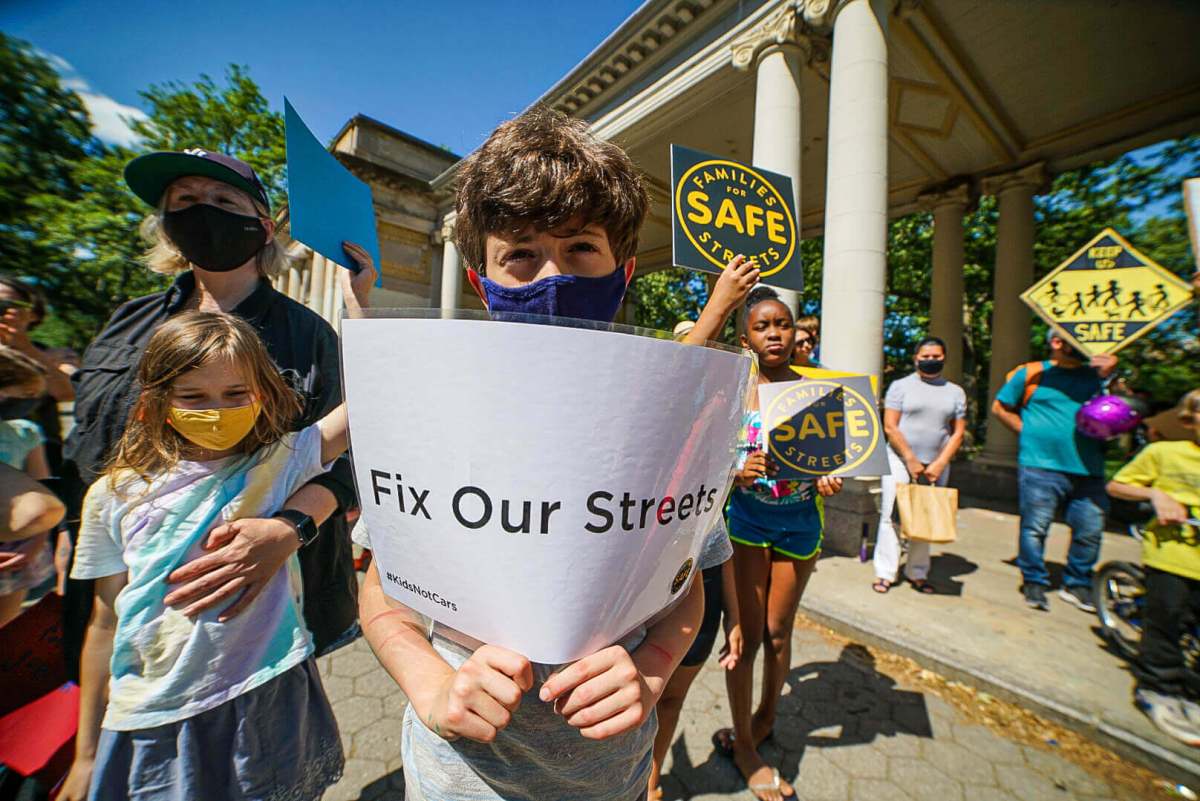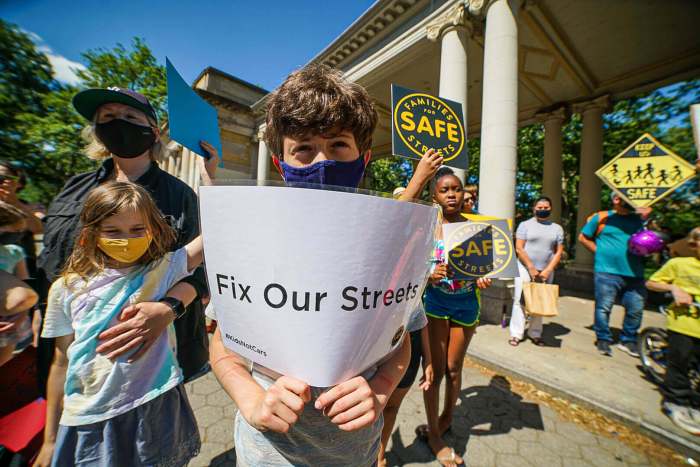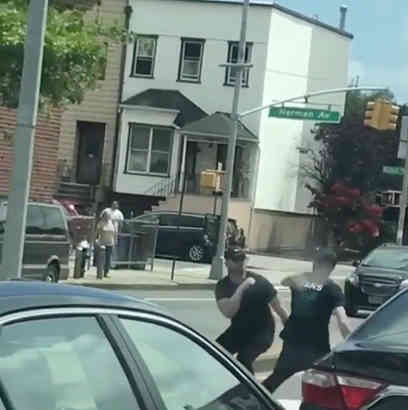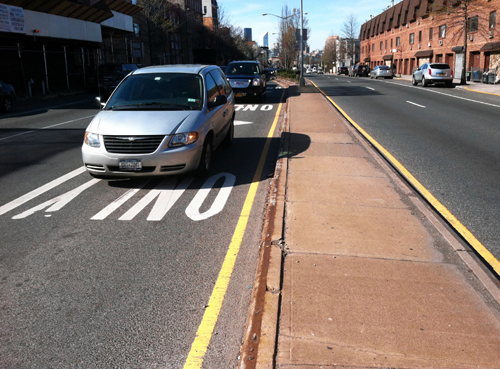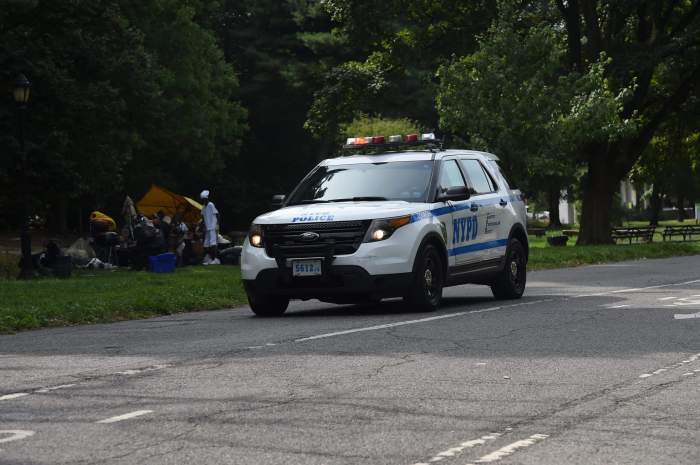The Department of Transportation sought input from drivers, pedestrians, and cyclists who frequent McGuinness Boulevard this week as they begin planning their $39 million redesign of the Greenpoint thoroughfare.
Mayor Bill de Blasio announced that the city would be investing in a “full redesign” of the road in May, weeks after Matthew Jensen, a teacher at nearby PS 110, was killed in a hit-and-run while crossing the street.
Neighbors and activists have raised concerns about McGuinness Boulevard for years as pedestrian injuries and fatalities continued to rise. It was one of the city’s first “Arterial Slow Zones” in 2014, slowing the speed limit from 30 to 25 mph — now the city standard.
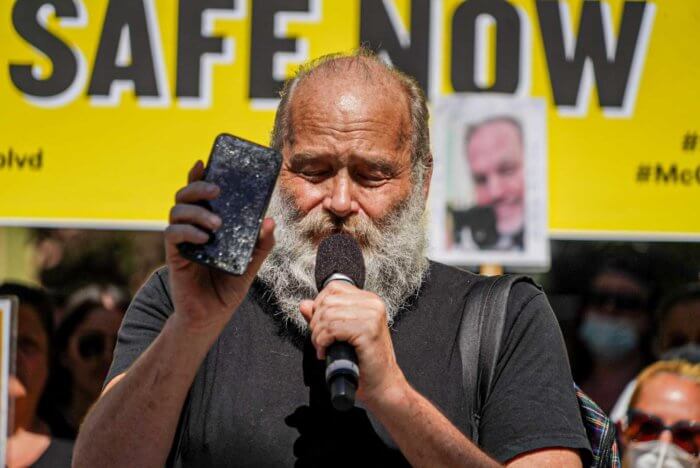
As part of their public engagement process, DOT joined Assemblymember Emily Gallagher to hold a virtual workshop on Sept. 29 to ask the community what they feel needs to be improved along the roughly 1.5-mile stretch of the road between Ash Street near the Pulaski Bridge and Meeker Avenue, which runs alongside the Brooklyn-Queens Expressway.
More than 80 people signed on to the two-hour workshop, where they heard a short presentation about the boulevard and DOT’s plans before breaking off into small groups to discuss their main concerns with department representatives and gathering together to share their findings with the full group.
“I’m super grateful that DOT and the mayor’s office are working with us to design a better street, and taking our recommendations into consideration and working alongside us to build a better opportunity, for, especially, pedestrians, cyclists,” Gallagher said at the start of the workshop. “It’s very important for us to take this opportunity to really think about the roles we have as users of the street, and really think about the moments we felt unsafe, however you use this street.”
Gallagher has been a longtime proponent of improving McGuinness Boulevard, even organizing a working group for neighbors who want to join the cause.
DOT has already made some short-term improvements, said civil engineer Zachary Wyche. A new crosswalk and pedestrian signal have been installed at Bayard Street, where Jensen was killed, and the length of traffic signals at night has been reduced from 120 seconds to 90 seconds, intended to keep drivers from picking up too much speed between lights.
Left-turn traffic calming has also been approved for dangerous intersections like Greenpoint Avenue, Kent Street, and Nassau Avenue, and a right-turn treatment is planned for Bayard Street.
These “in-house” projects are intended to make the street safer for pedestrians, cyclists, and drivers while large-scale redesign is being designed and implemented. DOT plans to begin work on the redesign in 2022.
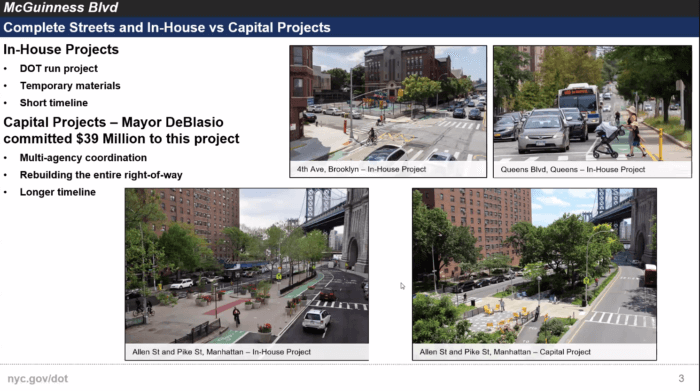
The NYPD counted 190 crashes with injuries on the road from 2016 to 2019, according to DOT. Pedestrians were most often hit by cars moving straight and making left turns, and cyclists are most often sideswiped and hit by cars turning right.
“So it’s a lot of paint, plastic bollards, rubber speed bumps,” Wyche said. “There’s sometimes a little bit of concrete, but in general, it’s done with things that we can put down quickly and rearrange, and it’s a shorter timeline than the capital project, which is rebuilding the entire right-of-way of the road.”
Wyche said the department already has a few key improvements in mind. McGuinness Boulevard is a truck route connecting major roadways, but truck drivers often make dangerous turns up and down side streets, something DOT is looking to curb. They also want to redesign the median, where people often stand and wait to get the rest of the way across the 100-foot-wide roadway, and introduce bike lanes
Bike infrastructure along McGuinness Boulevard is “basically nonexistent,” Wyche said, so they will be “starting from scratch.”
While Wednesday’s session was DOT’s first conversation with the public about the project, “Make McGuinness Safe” has become a rallying cry in the community in the months since Jensen’s death. The week before the workshop, the Make McGuinness Safe Coalition held a virtual teach-in to discuss the road’s current dangers and their suggestions for the redesign.
“We’re going to get the McGuinness Boulevard that we ask for,” said coalition organizer Kevin LaCherra. “It’s not a matter of resources, it’s a matter of political will.”
The most important thing the coalition is pushing for is a road diet — removing a lane of traffic in each direction. Removing a lane forces cars to travel at lower speeds, reducing both the number and severity of car crashes, explained urban planner Jack Darcey.
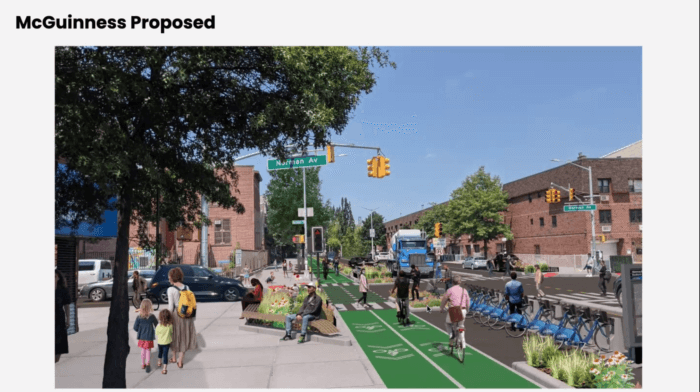
Removing a lane of traffic will also leave more room for wider sidewalks, protected bike lanes, and infrastructure like rain gardens, Darcey said, all ranking high on the list of the coalition’s asks for the redesign.
As DOT wrapped up their meeting, the six small discussion groups shared their conversations’ main takeaways. Most said they prioritized protected bike lanes and expressed the need for physical protections between bikes and vehicle traffic. One group suggested the addition of loading zones, so the trucks that still use the boulevard have a safe place to stop for deliveries without causing traffic and endangering pedestrians and cyclists.
Feelings about removing a lane of traffic were mixed — while many neighbors said they want to reduce speeding on McGuinness Boulevard, some worried that removing a lane would cause gridlock in the neighborhood and asked that DOT study the road and surrounding side streets to ensure traffic will continue to flow smoothly.
The community can continue to add their comments and suggestions about the redesign online, where neighbors have already left 461 hyper-specific comments on dangerous intersections, double-parking, and more, and DOT will be conducting in-person surveys in the neighborhood in coming weeks.


